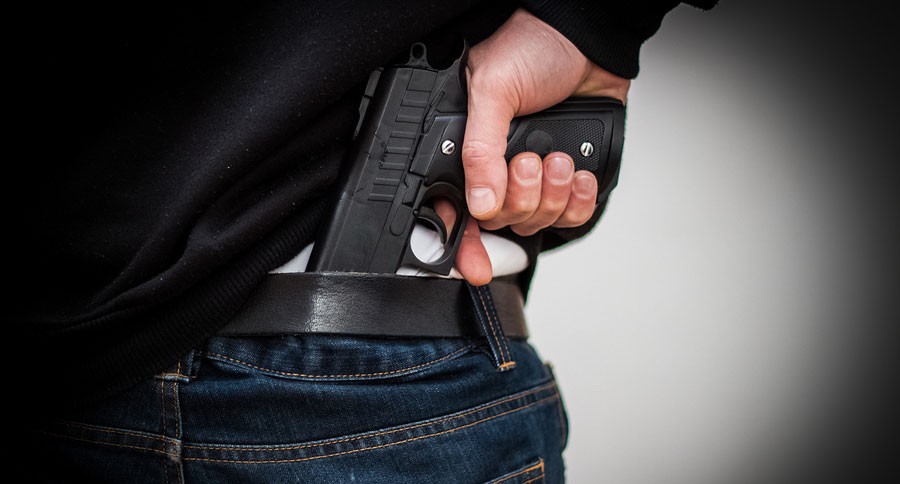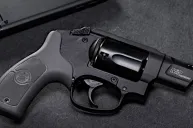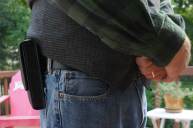Here is what to do to get over being nervous about concealed carry.
More and more people are taking responsibility for their own safety by getting a concealed carry permit these days. But carrying a loaded firearm on your person can be a nerve-racking experience to anyone who's never done it before.
It's OK, though. It's perfectly natural to be a little nervous about it. In fact, it is probably a good thing because carrying a gun for protection isn't something you should take lightly.
But before you go and carry for the first time, here are some tips to help overcome any nervousness you might have about carrying.
Buy a comfortable holster.
This may not be obvious to most people at first, but not all holsters are created equal. And if you're already nervous about carrying, an uncomfortable holster isn't going to help things. You don't want something that you constantly need to adjust, or something that doesn't securely hold to your body.
You also want something that totally covers the trigger guard, especially if you're carrying something that doesn't have a manual safety like a Glock. Many people worry about negligent discharges and a proper holster should help you prevent that no matter what kind of gun you choose to carry.
Unfortunately no one can tell you exactly what holster will be best because everyone is going to have a different opinion. I like Alien Gear's inside-the-waistband holsters myself, but someone else may like Blackhawk's outside-the-waistband better. It may take some trial and error.
Women have an advantage on the guys here because they can also have the option of concealing in a purse. There are even some purses made specifically for concealing. Again, make sure you get something that covers the trigger guard so something in the bag doesn't cause an accidental discharge.
Whatever you decide to do, don't skimp on a holster. It makes no sense to drop $600 or more on a carry gun only to put it in a $20 one-size-fits-all holster from Walmart. Buy the right holster for your firearm that also provides trigger security and all-day comfort. This will best fit your wardrobe when you'll be most often carrying.
Also make sure if you're using a waistband holder that you're using a proper belt to help support the firearm's weight. You don't want to readjust anything in public. It defeats the whole purpose of concealed carry. Do these things and you'll be a lot less nervous in the long run.
Carry at home first.
Before you go out in public, just spend some time carrying at home. You can generally do this legally even if you're still waiting for your concealed carry permit in the mail. Just go on about your daily business and try to get used to the firearm's weight and how it moves when you do certain things.
This is also a good time to determine if your wardrobe is going to provide any printing issues. You want to nip bad habits like printing and adjusting in the bud. Also practicing at home gives you the opportunity to practice things like drawing and re-holstering. Just make sure you're using snap caps in the firearm. Remember, safety first!
If you can get used to carrying a concealed firearm at home, the transition to carrying in public will be much easier.
Know the laws ahead of time.
Knowledge is power, especially when it comes to carrying a concealed firearm. You should know the concealed carry laws of your state before you ever leave your driveway with a concealed firearm. If you're traveling out of state, consult a reciprocity map to make sure the state you're visiting honors your state's permit.
If you're in a gun-friendly state like Texas or Wyoming, you're going to have a lot less things to worry about than people who live somewhere like California or New York.
Most people focus almost entirely on the self-defense laws of their state when they do this research. That's good, you need to know it. But you also need to know things like what to do if a police officer pulls you over.
You'll also run into a glut of laws that dictate when and where you can carry. For instance, in my state of Michigan, you can carry in a movie theater, but only if that theater has a seating capacity under 2,500 people. Most places will have something near their front entrance stating this capacity if you have any doubts.
Another weird thing you can run into is National Parks. It's legal to carry a concealed firearm in most National Parks and Monuments. But it's illegal to carry into the gift shops or visitor centers because they're federal buildings.
If you have any doubt at all about the legality of you carrying in a specific place, just air on the side of caution and don't do it. At least not until you can confirm the legality. Let's not make things harder for law enforcement.
If you do your research ahead of time and you should rarely run into any issues and you can carry with confidence just about anywhere it's legal. I personally recommend Handgunlaws.us, a site fellow concealed carry enthusiasts frequently update with the ever-changing laws in this country.
Start carrying in winter.
When I took my concealed carry course, it was October and my instructor said: "Winter is coming. Ideal carry weather." And he was correct. As long as you are in a colder-weather state, winter is the best time to start carrying.
This is simply because you'll have more layers of clothing to help conceal. You're much less likely to print while wearing a heavy coat in the dead of winter. It is always much harder to conceal while wearing shorts and a T-shirt in the dog days of August.
If you're too nervous to start carrying in the summer months, just wait a little bit longer and try things in the winter when it's easier to conceal. You'll be able to build confidence that'll make you ready to try again when warmer weather comes around once more.
Start small with a trip to the store.
If you got a concealed carry permit because you transfer large amounts of money between your work and a local bank, don't make the first time you carry your next day on the job. It's best to work up to carrying on a regular basis.
That's why I suggest simply going to your local Walmart or other grocery store for your first time carrying. Just go, pick up some milk and eggs and head home. Carry on as if everything is normal, because it really is. As long as you have a valid CCW permit, you're good to go.
It's natural to be a little nervous, but it's amazing how calming just a simple little trip to run errands can help ease any reservations about carrying a concealed firearm. Some people are too nervous to even put one in the chamber for this first walk. We think that's fine, too, but just realize an un-chambered round does you no good in a self-defense situation. But you can work up to that if it makes you more comfortable.
Take a good firearms course.
Most states require a pistol course or concealed carry class of some kind before they'll issue a concealed weapons permit. Even if you live in a constitutional carry state, it's probably a good idea to get some weapons training if you don't already have some.
A good instructor can help correct any bad habits you might have in your shooting techniques and can make recommendations for a carry weapon, holsters, ammo and more.
They can also help address glaring questions on gray areas of firearms laws. For instance, most states prohibit carrying in churches. But where does something like the graveyard adjacent to a church fall? Think of things like this to ask that'll apply to where and when you carry and you can gain confidence by getting reliable answers from an expert.
Also, the more you practice and become proficient with your firearm, the more confident you'll be while carrying it in public and the more ready you'll be in the unfortunate event you ever have to use it.
NEXT: VIDEO: WOULD YOU FIRE A .50-CALIBER IN YOUR LIVING ROOM?
WATCH
https://rumble.com/embed/u7gve.cc4f1l/




